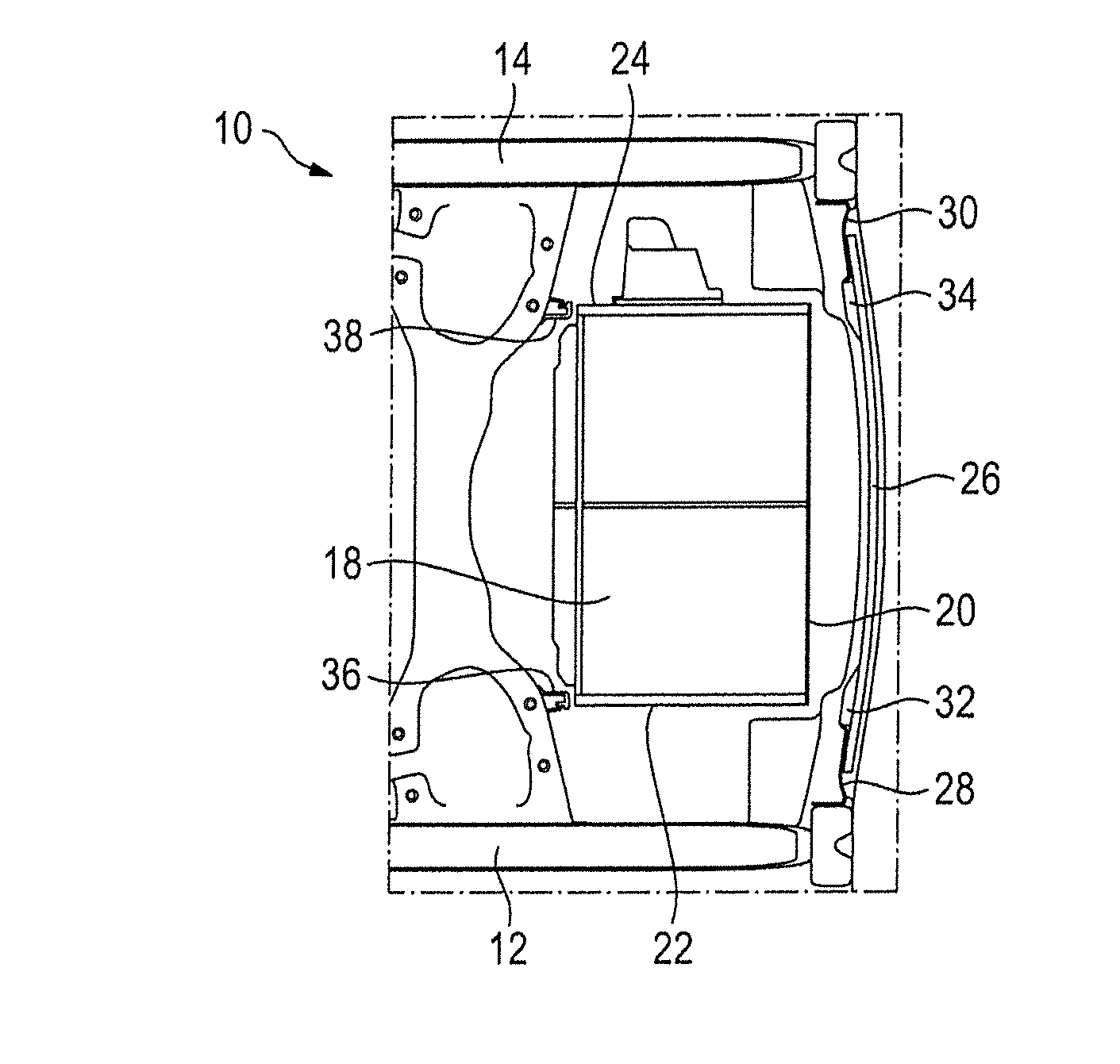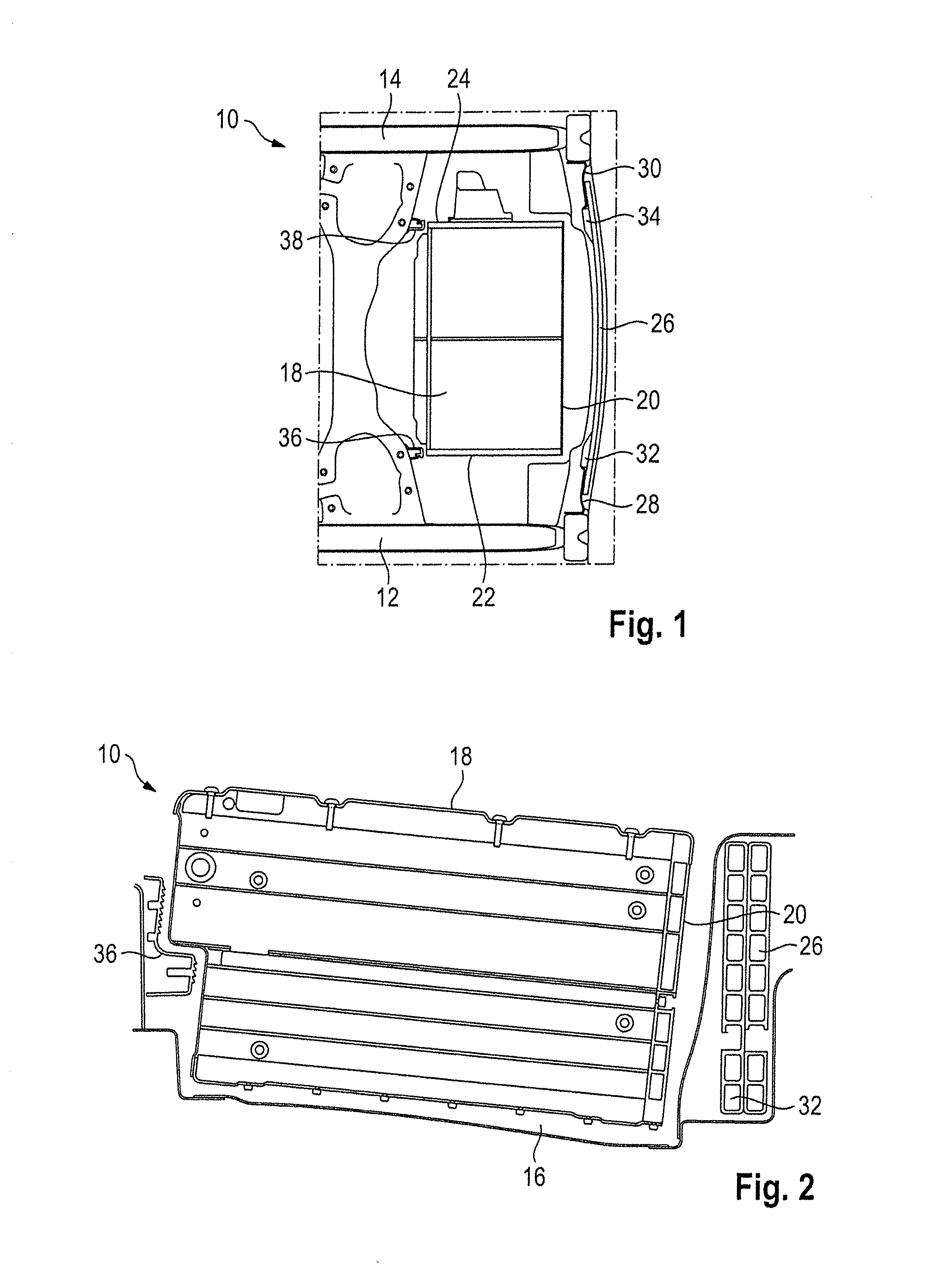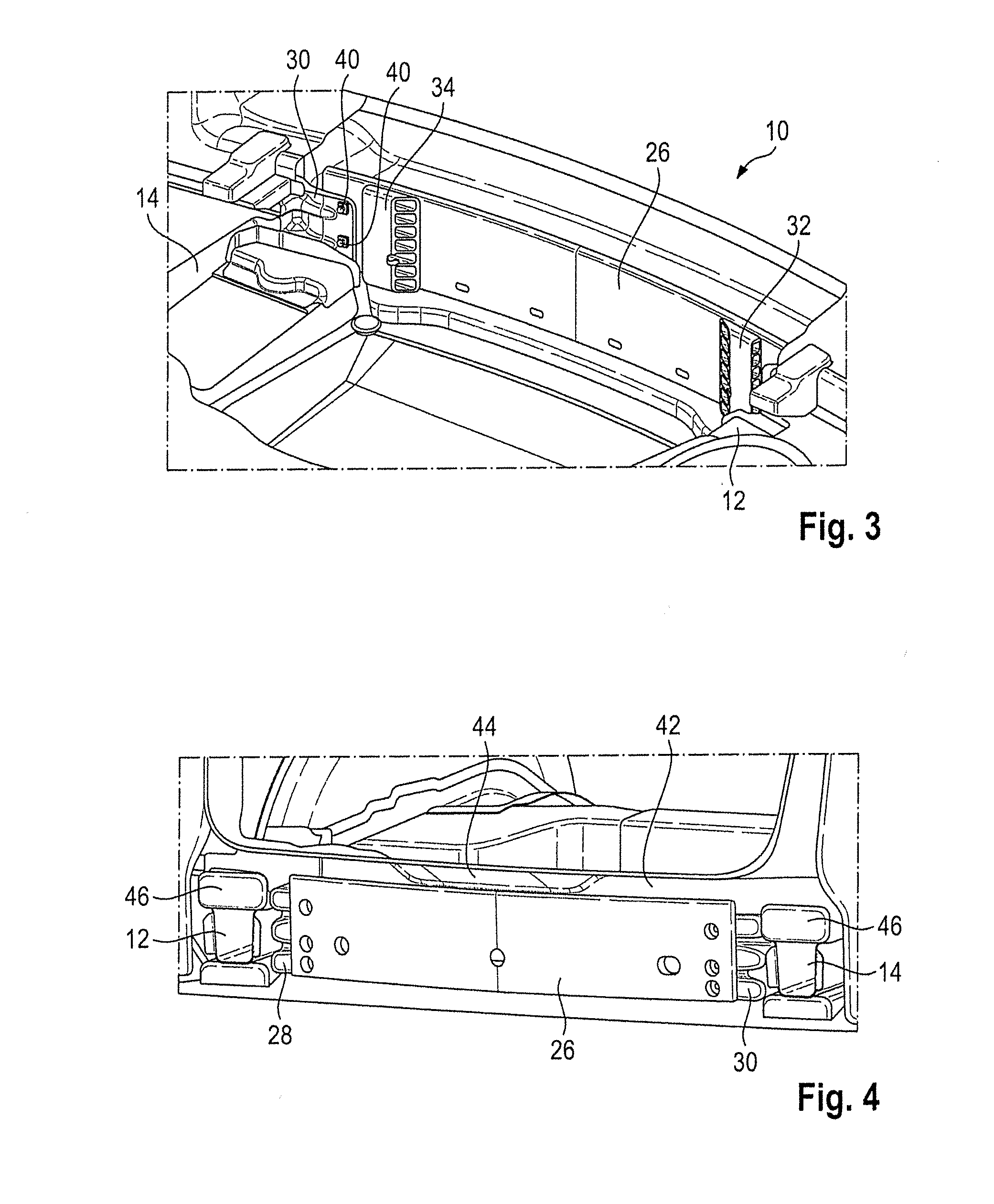Motor vehicle rear
a rear-mounted, motor vehicle technology, applied in the direction of vehicle sub-unit features, superstructure connections, understructures, etc., can solve the problems of affecting the performance of the motor vehicle, etc., to achieve easy bendability, dissipate impact energy, and dissipate impact energy
- Summary
- Abstract
- Description
- Claims
- Application Information
AI Technical Summary
Benefits of technology
Problems solved by technology
Method used
Image
Examples
Embodiment Construction
[0025]The vehicle rear 10 illustrated in FIGS. 1 and 2 has left and right longitudinal members 12 of a supporting structure of a motor vehicle. A receiving recess 16 is between the left and right longitudinal members 12 and 14 and receives a receiving housing 18 for a traction battery. The receiving housing 18 is configured as a box or a cube and has a back wall 20 connected to left and right side walls 22 and 24.
[0026]A rearwardly convex impact profile 26 is provided to protect the traction battery in the receiving housing 18 in the event of a rear crash. The impact profile 26 is connected on an inner side of the left longitudinal member 12 via an angular left bracket 28 and on an inner side of the right longitudinal member 14 via an angular right bracket 30. A left reinforcing element 32 is connected to the impact profile 26 in the longitudinal direction behind the left side wall 22, while a right reinforcing element 34 is connected to the impact profile 26 in the longitudinal dir...
PUM
 Login to View More
Login to View More Abstract
Description
Claims
Application Information
 Login to View More
Login to View More - R&D
- Intellectual Property
- Life Sciences
- Materials
- Tech Scout
- Unparalleled Data Quality
- Higher Quality Content
- 60% Fewer Hallucinations
Browse by: Latest US Patents, China's latest patents, Technical Efficacy Thesaurus, Application Domain, Technology Topic, Popular Technical Reports.
© 2025 PatSnap. All rights reserved.Legal|Privacy policy|Modern Slavery Act Transparency Statement|Sitemap|About US| Contact US: help@patsnap.com



